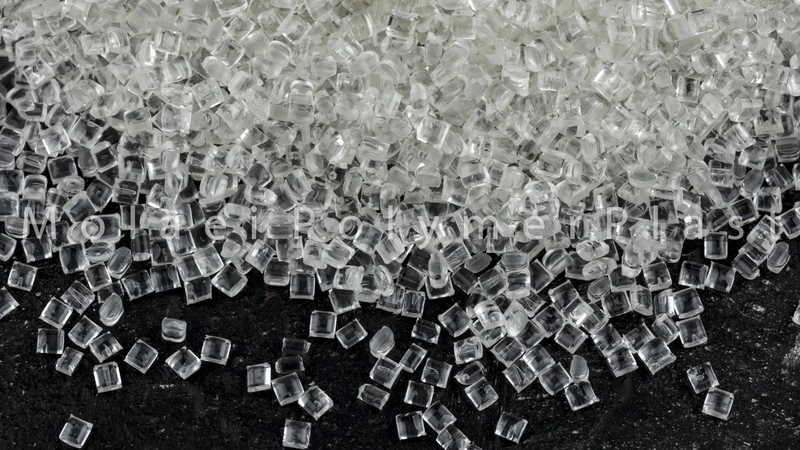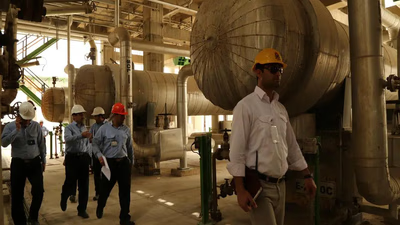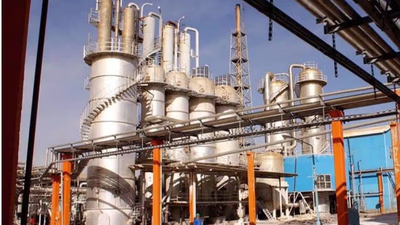
Polybutadiene rubber: properties and safety insights for trade.
Polybutadiene rubber is a synthetic polymer derived from the polymerization of butadiene monomers. It consists of a polymer chain with repeating units of butadiene, which contain four carbon atoms and two double bonds. The polymerization process can result in different configurations of double bonds, such as cis or trans, impacting the properties of the resulting PBR. The safety considerations for polybutadiene rubber depend on various factors, including the specific grade, formulation, additives, and processing conditions. It is important to follow the manufacturer's guidance and safety precautions provided in the SDS for the specific PBR product you are using or handling. Some general safety considerations for handling rubber materials, including PBR, may include:
Polybutadiene rubber is a solid, light yellow synthetic rubber. This composition is odorless. The melting point of this material is above 150 ° C. The compound catches fire at 332 ° C. The density of polybutadiene at 20 ° C is equal to 0.9 g / cm3. This polymer compound is insoluble in water but soluble in other organic solvents such as hexane, toluene, benzene, chloroform and tetrachloride. Polybutadiene rubber is stable under normal conditions, but it melts at very high temperatures. Polybutadiene polymeric storage packages should not be exposed to oxidizing agents. The compounds associated with this substance are butadiene and carbon dioxide, both of which are dangerous to health.
Polybutadiene rubber does not pose a risk to the environment, but if it comes in direct contact with the eyes and skin, the polymer particles can cause severe irritation along with redness and pain in the area of contact. People who come in contact with this substance should use special work clothes. When polybutadiene rubber is decomposed by heat, it is released into the atmosphere in the form of oxygen-carbon and carbon dioxide, which reduces the amount of oxygen in space and will have very severe toxic effects on the body's cells, resulting in difficulty breathing. For this reason, contact with incendiary sources should be strictly avoided.
Packages containing polybutadiene rubber are sold in bulk or packages of 1000 kg. These packages should be stored in dry and cool storeroom away from heat sources and other chemicals. Shipping standards must be observed when transporting packages containing this material. Residues of this polymer arrangement should not be discharged into water and wastewater collections under any circumstances. Packages of this material should be placed on wooden pallets. Materials should be stored in packages made of polyethylene. The storage temperature of these materials should not exceed 30 ° C. The standard for storing polybutadiene rubber in storeroom is at least one year.
Direct and prolonged contact with rubber materials, including PBR, may cause skin irritation or sensitization. It is advisable to use appropriate personal protective equipment (PPE) such as gloves and eye protection when handling PBR. Inhalation of rubber dust or fumes generated during processing or machining of rubber materials, including PBR, should be minimized. Adequate ventilation or respiratory protection should be used in enclosed or poorly ventilated areas. Rubber materials, including PBR, are generally combustible. Precautions should be taken to prevent the ignition of rubber dust or rubber products and to ensure the availability of appropriate fire control measures. Proper disposal practices should be followed in accordance with local regulations and guidelines for the disposal of rubber waste or products containing PBR.
-

The Middle East is a key player in the global polybutadiene (PBR) market, leveraging its abundant petroleum and natural gas resources. The region has developed extensive petrochemical complexes that produce a variety of chemicals and polymers, including PBR. The availability of butadiene, a crucial raw material for PBR production, is ensured by the region"s rich petroleum reserves. This proximity to feedstock sources reduces transportation costs and enhances competitiveness in both regional and global markets. Countries like Saudi Arabia, UAE, and Qatar have established polymerization plants that contribute significantly to the production capacity of PBR. Investments in research and development are ongoing to improve product quality and meet industry demands. Polybutadiene is favored for its water resistance, abrasion resistance, and flexibility at low temperatures, making it suitable for various applications such as tires and seals. However, it has limitations including low heat resistance and unfavorable processability.
The Middle East also focuses on expanding its downstream industries to add value to its petrochemical offerings by processing PBR into finished rubber products. With strategic access to major shipping routes, the region efficiently exports PBR to markets in Asia, Europe, and Africa while also catering to domestic demand driven by growing automotive and construction sectors. "
-

Comprehensive knowledge of polybutadiene rubber (PBR) producers in West Asia is essential for traders to conduct effective market analysis. Understanding supply-demand dynamics, production capacities, and the competitive landscape allows traders to make informed decisions regarding pricing and sourcing. Key producers such as Sadara, Petro Rabigh, Borouge, and Qatar Petrochemical Company play significant roles in the region"s PBR market. With Sadara"s capacity at 150,000 metric tons per year and Petro Rabigh at 130,000 metric tons, these companies are crucial for meeting both domestic needs and export demands. The insights gained from knowing these producers enable traders to optimize their supply chains by identifying reliable suppliers and assessing production capabilities. Additionally, this knowledge opens up opportunities for market expansion by identifying emerging producers and new capacities. The recent establishment of a large butadiene unit is expected to generate significant revenue through exports to countries like Japan and China. Traders can leverage detailed information about PBR producers to stay updated on market trends, negotiate better contracts, and develop risk mitigation strategies against potential supply chain disruptions.
-

Polybutadiene rubber (PBR) is a synthetic polymer formed from butadiene monomers, characterized by its light yellow color and solid state. Its properties vary based on the configuration of double bonds during polymerization, influencing its applications in various industries. Safety considerations are crucial when handling PBR, as it can pose health risks if not managed properly. The material is stable under normal conditions but can catch fire at high temperatures (332 °C) and should be stored away from oxidizing agents. It is insoluble in water but soluble in organic solvents like hexane and toluene. Proper personal protective equipment (PPE) is recommended to prevent skin irritation and respiratory issues from inhaling rubber dust or fumes. Storage guidelines dictate that PBR should be kept in a cool, dry place, ideally below 30 °C, and away from heat sources. Packages must be transported according to shipping standards, ensuring they are placed on wooden pallets and stored in polyethylene containers. Disposal of PBR waste must comply with local regulations to prevent environmental contamination.
-

Polybutadiene rubber (PBR) is known for its high elasticity, resilience, and excellent abrasion resistance, making it ideal for various applications. It is extensively used in tire manufacturing, where it enhances performance by improving rolling resistance and traction. PBR"s durability and flexibility also make it suitable for conveyor belts, seals, gaskets, and vibration dampers in automotive and industrial settings. Its chemical resistance allows it to withstand exposure to oils and fluids, which is crucial for automotive components. Additionally, PBR is utilized in sporting goods like golf balls and tennis balls due to its resilience. The material"s low glass transition temperature ensures flexibility even in cold environments. PBR can be blended with other rubbers to tailor its properties for specific applications, enhancing its versatility across industries.
-

Polybutadiene rubber (PBR) is a synthetic elastomer derived from the polymerization of butadiene, a petroleum-based monomer. It is known for its high resilience, excellent abrasion resistance, and low glass transition temperature, making it suitable for various applications. PBR is predominantly used in the tire industry, accounting for over 70% of its consumption, where it enhances traction and durability. There are two main types of PBR: high cis and high trans, each offering different properties such as elasticity and stiffness. The material can be modified with additives to improve characteristics like oil resistance and heat stability. In addition to tires, PBR is utilized in industrial products such as conveyor belts, hoses, seals, and adhesives. Its versatility allows manufacturers to tailor its properties for specific applications by adjusting molecular structure or incorporating fillers like carbon black. The production process involves polymerization using catalysts and can be executed through various methods including solution or emulsion polymerization.
Overall, polybutadiene rubber"s unique properties contribute significantly to its widespread use across multiple industries. "





